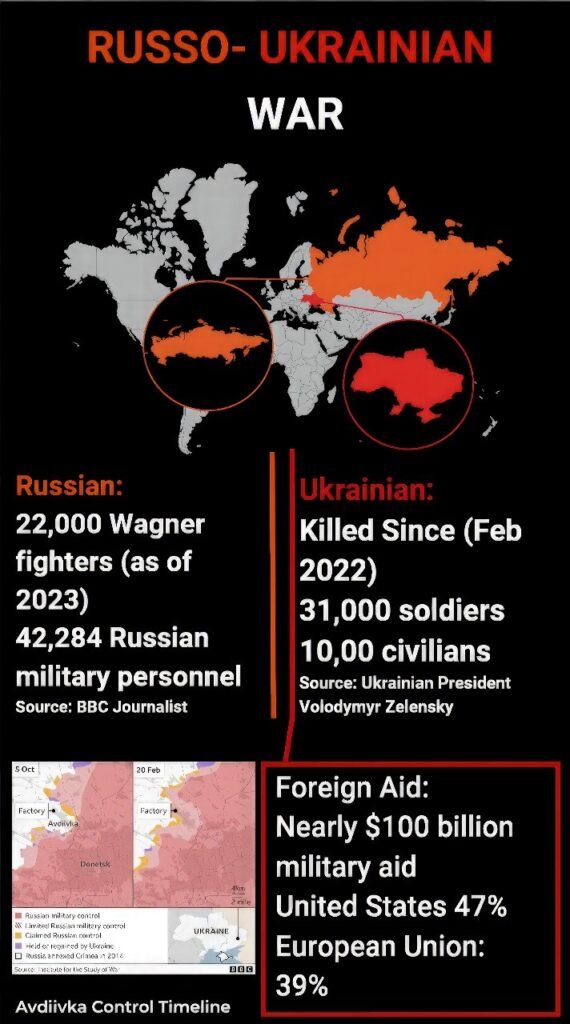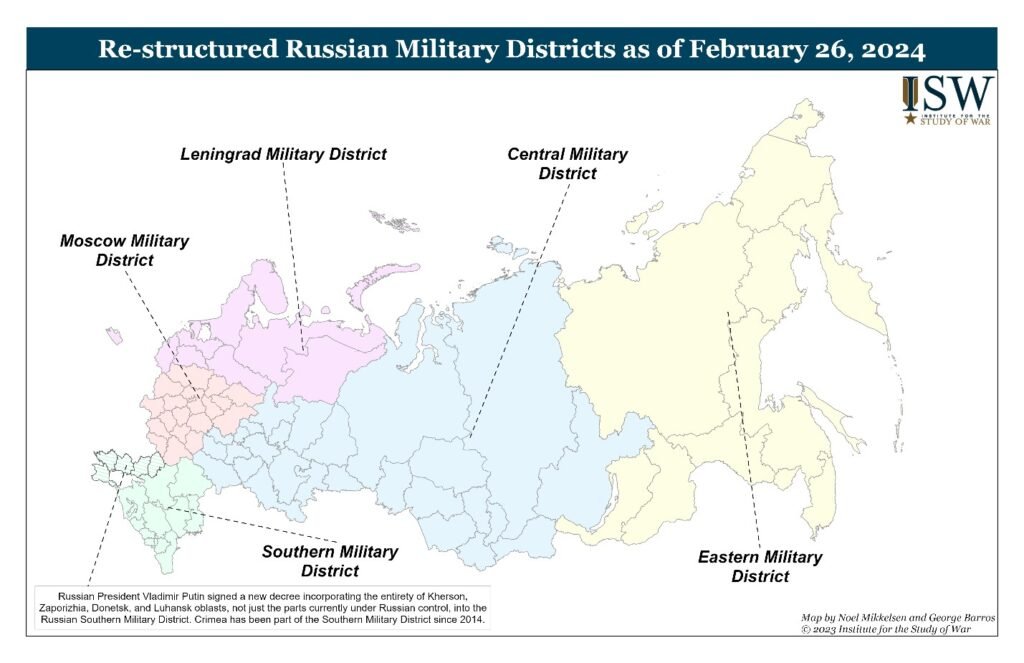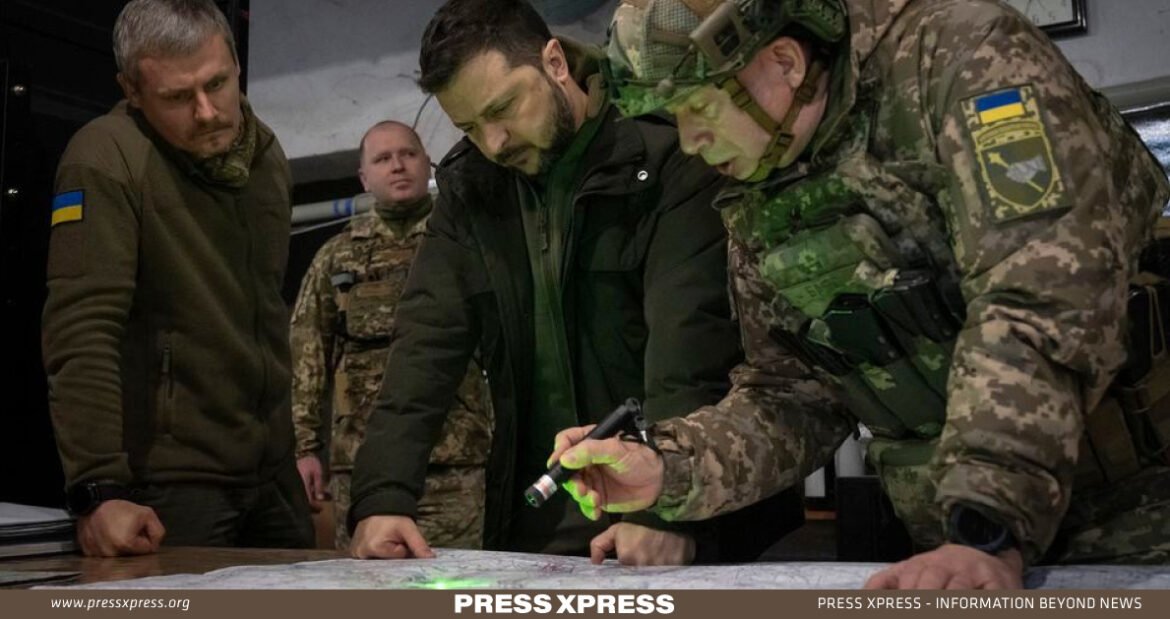The ongoing Russo-Ukrainian conflict has been a matter of global concern, with tensions escalating in recent years. As of 2024, there are growing indications that Russia may be gearing up for a new offensive against Ukraine during the upcoming summer months.
The conflict between Russia and Ukraine began in 2014 when Russia annexed Crimea, a region previously part of Ukraine. Since then, fighting has continued in eastern Ukraine, primarily in the Donbas region. The war has resulted in thousands of deaths, displacement of civilians, and strained relations between Russia and Western countries.
You Can Also Read: Putin’s Dire Warning on Nuclear War Raises Tensions in the West
Ukrainian President Volodymyr Zelensky recently sounded the alarm, asserting that Russia is poised to launch a fresh offensive against his nation during the summer. Zelensky’s warning comes amid heightened tensions and military build-up along the Russo-Ukrainian border.
Russo-Ukrainian War: At a Glance

Statements by Zelenskiy
President Zelensky mentioned a ‘new wave of Russian aggression’ expected in the coming months. Speaking a day after the second anniversary of Russia’s invasion of Ukraine, Zelenskiy said it was vital for Kyiv and its Western allies to remain united and reiterated that Ukraine’s victory depends on continued Western support.
“We will prepare for their assault. Their assault that began on October 8 has not brought any results, I believe. We, for our part, will prepare our plan and follow it,” Zelenskiy told reporters in Kyiv.
Zelenskiy announced that 31,000 Ukrainian soldiers had lost their lives since February 2022, marking the first official casualty count in over a year. Stressing the critical significance of troop rotations for the ongoing conflict, he underscored the necessity for Ukraine to enhance its readiness of reserve forces.
Russian Preparations
Russia is intensifying its military presence near the Ukrainian border, according to satellite imagery and intelligence reports. The images show armored vehicles, artillery, and troops in strategic positions, as well as heavy artillery systems, such as howitzers and rocket launchers, near the border. Intelligence agencies report troop movements toward the border, along with logistical preparations, such as supply convoys, fuel depots, and field hospitals. Russian military communications also reveal a high level of coordination and operational planning.
The intercepts indicate a well-organized and centralized command structure, with discussions about troop movements, target prioritization, and supply routes. Satellite imagery also captures an increase in Russian military aviation activity near the border. The images show fighter jets, reconnaissance planes, and transport aircraft conducting sorties for air operations. Russian naval vessels are also moving toward the Black Sea, a region of strategic importance for both offensive and defensive operations. The vessels include warships, submarines, and amphibious assault ships. Ukrainian intelligence sources report the deployment of electronic warfare systems by Russian forces. These systems can disrupt communication networks, radar systems, and GPS signals, highlighting Russia’s intent to gain an edge in electronic warfare capabilities.

There is a Plan
Ukrainian President Volodymyr Zelenskiy said that Kyiv had a clear and secret plan to counter the growing Russian military presence near the Ukrainian border. He said he would not disclose any details of the plan that could compromise its effectiveness or endanger the lives of Ukrainian soldiers.
He also said that he had replaced his popular armed forces chief, Ruslan Khomchak, in a dramatic military shake-up this month, as part of his secret military strategy to counter Russia. He said that he needed a new commander who could implement his plan more effectively and efficiently.
“I needed a change, I needed a new vision, a new approach. I appointed Valeriy Zaluzhny, who is a very experienced and professional officer. He knows how to execute my plan,” Zelenskiy said.
Kyiv hoped to hold a summit in Switzerland this spring to discuss its peace proposal with its allies, and then present it to Russia. The proposal will be based on the Minsk Agreements, which were signed in 2015 to end the conflict in eastern Ukraine but had been largely ignored by Russia. His proposal would include new measures to ensure the implementation of the agreements, such as the withdrawal of Russian troops, the restoration of Ukrainian sovereignty, and the holding of free and fair elections in the occupied regions. “We want peace, we want to end this war. We have a proposal, and we want to present it to our allies first, and then to Russia. We want to follow the Minsk agreements, but we want to make them work. We want to see real results, not just words,” he said.
International Response
The international response to Russia’s invasion of Ukraine has been marked by concern, condemnation, and solidarity. The United States, European Union, and NATO have repeatedly voiced their alarm over the potential offensive and its implications for regional and global security. They have also reaffirmed their commitment to support Ukraine’s sovereignty, territorial integrity, and democratic aspirations. In addition, they have warned Russia of the serious consequences of further aggression, including the possibility of additional sanctions and isolation.
The community may impose additional sanctions on Russia if an offensive occurs. Diplomatic efforts to prevent escalation are ongoing. These countries have already imposed a range of sanctions on Russia since the start of the conflict in 2014, targeting individuals, entities, sectors, and transactions. These sanctions aim to pressure Russia to respect international law and norms, and to engage in a peaceful resolution of the crisis.
However, the sanctions have not deterred Russia from continuing its military actions and violating the ceasefire agreements. Therefore, the international community may consider imposing more severe and comprehensive sanctions on Russia if an offensive occurs, such as cutting off access to financial markets, trade, and technology.
While the situation remains fluid, the evidence suggests that Russia is indeed preparing for a summer offensive against Ukraine. The international community must closely monitor developments and work toward peaceful solutions to prevent further escalation. The stakes are high, and the world watches with bated breath as tensions persist in Eastern Europe.


